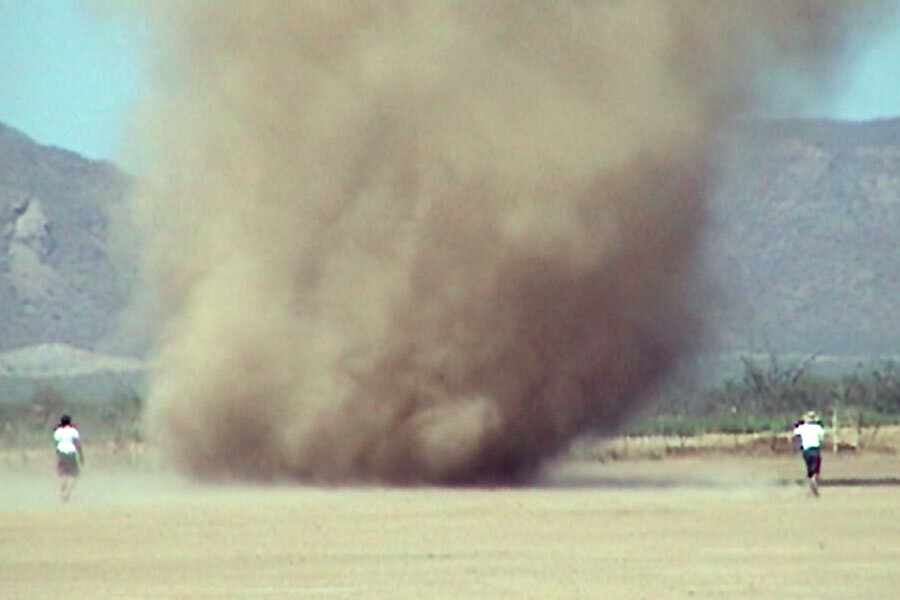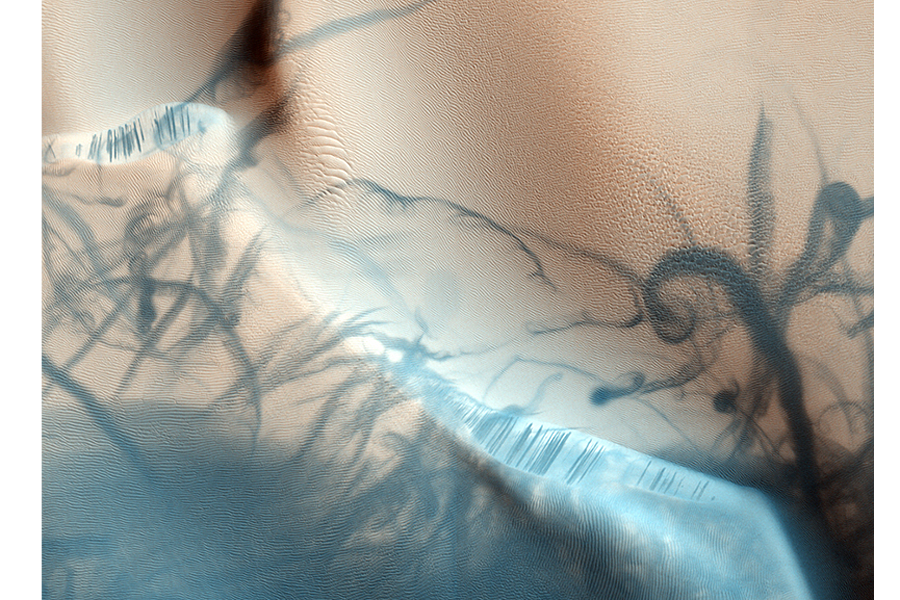How dust devils hold clues to Mars's core and climate
Loading...
A vortex swirls over the surface, picking up dust as it goes. The spinning dust devil pulls at the ground, making it shake and tilt, and leaving dark, dustless streaks in its path.
Although a relatively rare sight on Earth, dust devils abound on the surface of Mars. Understanding these twirling dusty tubes could help sharpen, or perhaps muddy, our overall picture of conditions on the Red Planet.
That’s why researchers are working to equip the InSight mission to Mars with technology and information that can separate the impacts of dust devils from other dynamic processes acting on the surface of Mars.
One such technology is a seismometer, designed to detect earthquakes – actually, marsquakes in this case – and other shifting of the ground. NASA’s InSight mission to Mars will deposit a seismometer on the surface of the planet.
Previously, scientists were unable to separate the shakes of quakes and those from the pressure of dust devils. So researchers have worked to determine the seismic signature of a dust devil, as in a paper in the Bulletin of the Seismological Society of America published in Tuesday's edition. This data will allow scientists to subtract the seismic noise of a passing dust devil from one caused by other factors below the planet’s surface.
“The big goal of the mission is to ascertain Mars’s internal structure from the distant earthquakes,” explains study author Ralph Lorenz in an interview with The Christian Science Monitor.
But data from this seismometer could also help researchers learn about the Red Planet’s dusty atmosphere and other aspects of Mars’s climate.
“Seismic measurements may be a new window into dust devil studies,” says Dr. Lorenz, a planetary scientist at the Johns Hopkins University Applied Physics Lab.
Using pressure sensors, wind detection, and images captured by a rover’s camera, “We can then infer some other things that will help us understand the Martian environment and interpret the geophysical seismic data,” Lorenz says. “Their abundance, their size, their direction of motion can tell us some things about the structure of the atmosphere and the ambient wind” on Mars,” he says. The better understanding of dust devils reported in this paper will help scientists learn more about Mars.
Scientists previously studied dust devils by chasing them down to insert instruments in the core of the vortex. But such a hunt isn't feasible on Mars. So Lorenz and his colleagues determined a stationary way to learn about dust devils, as described in this paper.
Dust devils, Lorenz says, “are an important agent of dust raising, which is a big factor in the Martian climate.”
When dust devils vacuum up a thin layer of dust from the ground in their path, they leave darkened streaks. When those dark splotches become more numerous over a region, they can change the way sunlight reflects off Mars’s surface.
Such a reflection change is occurring on Earth as Arctic sea ice melts. The bright, highly reflective ice bounces a significant amount of the sun’s rays back into the atmosphere. But as the ice melts, less area is covered with the reflective ice. The dark ocean regions remaining absorb those rays, heating the region.
Unlike Earth, Mars has a relatively uniform climate. “One day is very much like the next and generally one year is like the next, with the exception of the large dust storms,” Lorenz says.
As such, Lorenz says, “dust devils are an important window into the Martian climate.”
Dust devils were initially discovered on Mars when exploration rovers Spirit and Opportunity surprised scientists with their longevity. Previous exploration had left them expecting the mission to last just 90 days, says Lorenz.
“There’s this dust drizzling out of the Martian atmosphere all the time,” Lorenz explains. “The first solar-powered lander, Mars Pathfinder in 1997 with its little rover Sojourner, saw its power drop by a third of a percent every day.”
But when Spirit and Opportunity arrived, they had a different experience. Dust began accumulating on the solar arrays as scientists expected, but that did not stop them. There was a sudden jump in the solar power the rovers received. The arrays had been wiped clean.
At first scientists debated whether a dust devil or a strong wind was responsible. But the events continued and they happened in line with dust devil season. “As soon as the cameras started to see dust devils, the arrays got cleared off,” says Lorenz.









